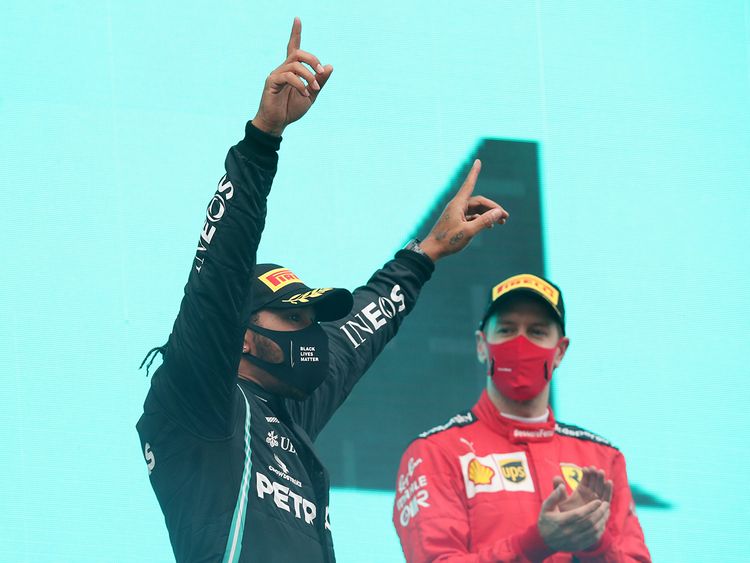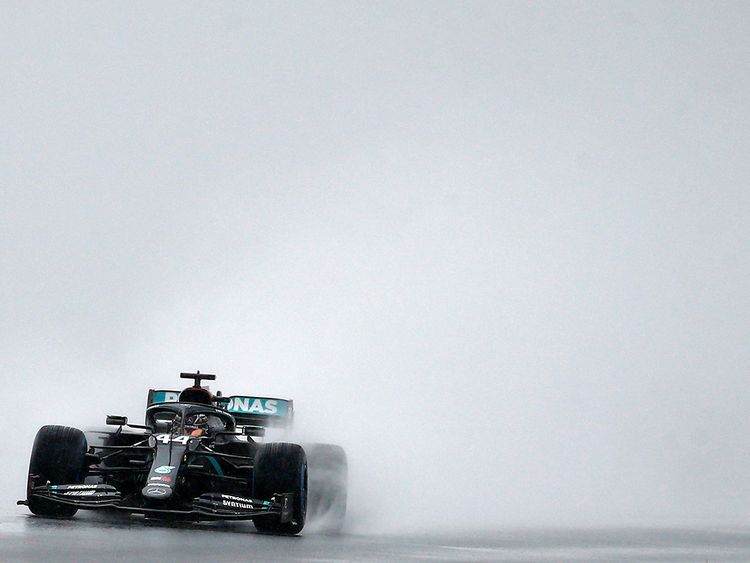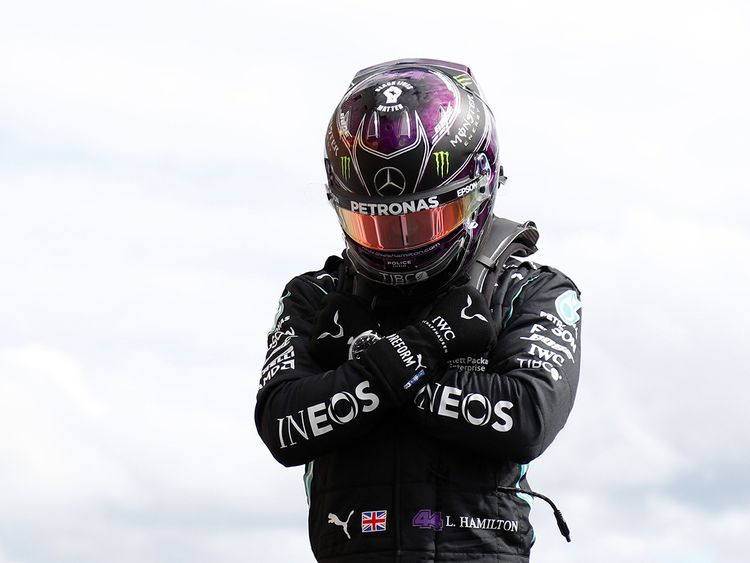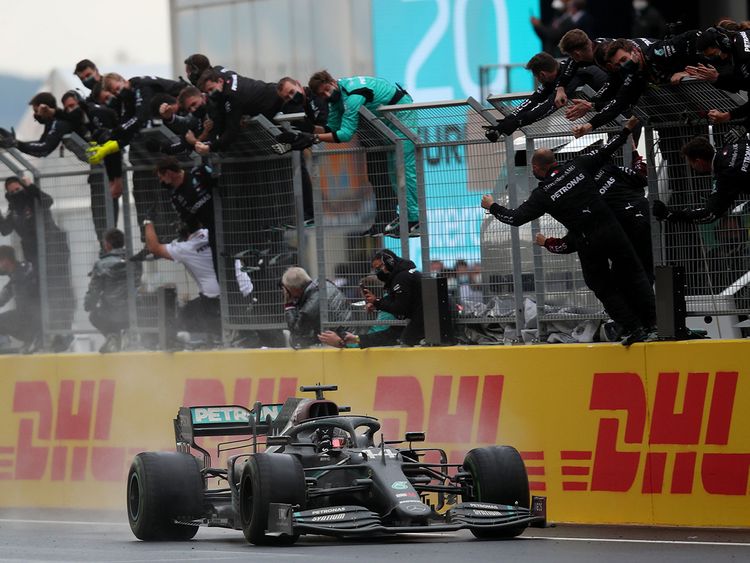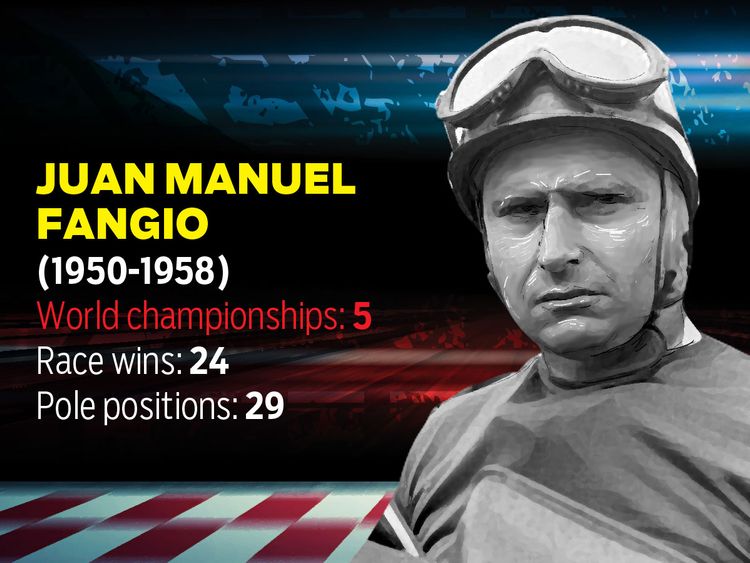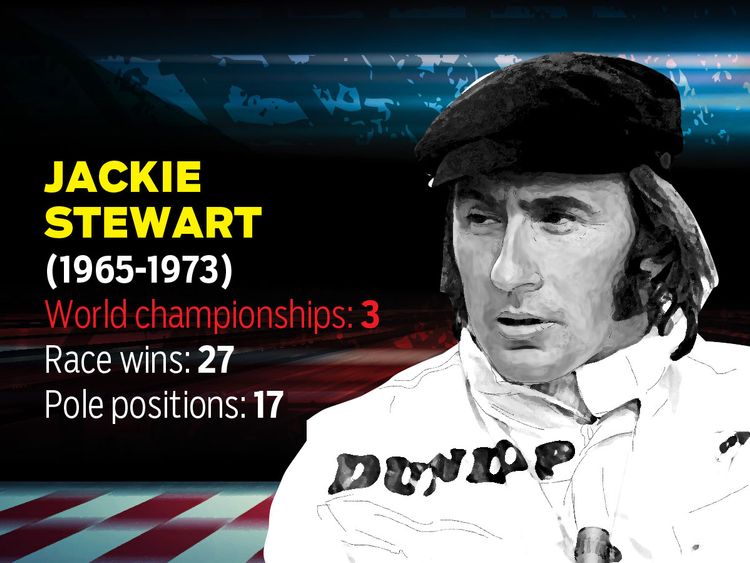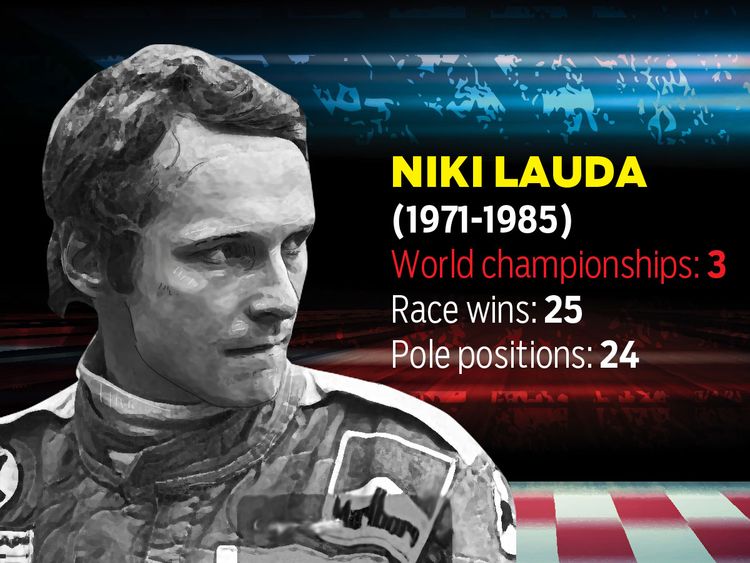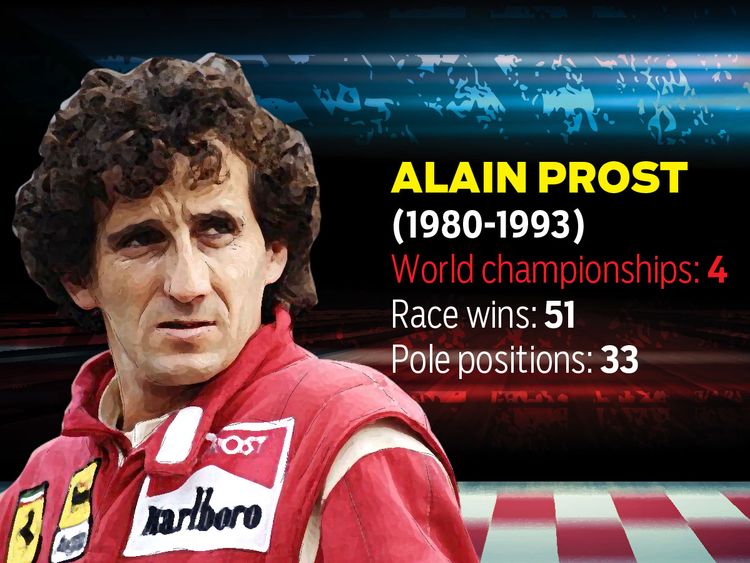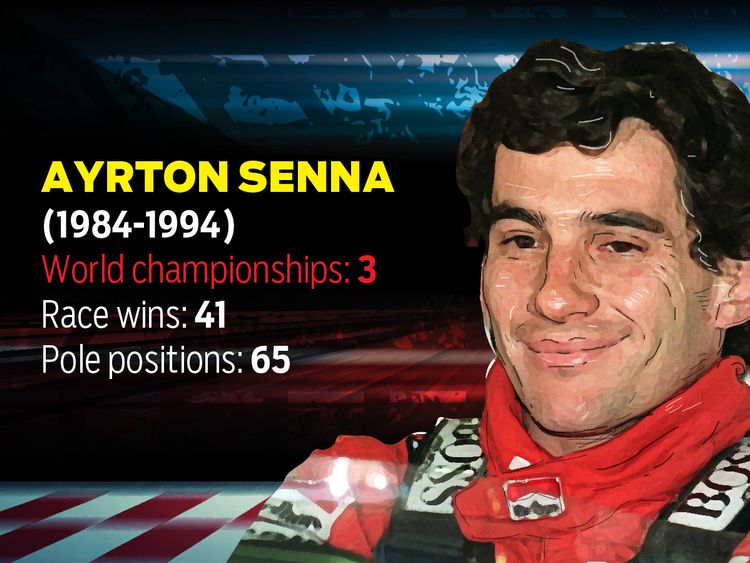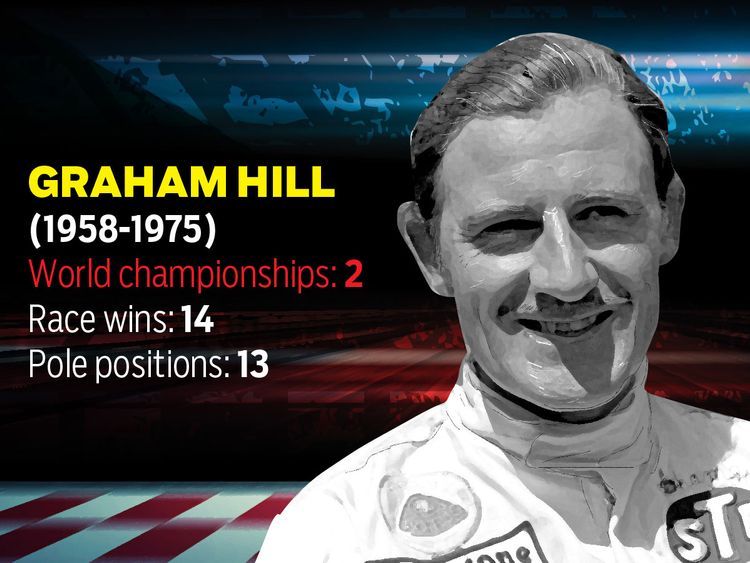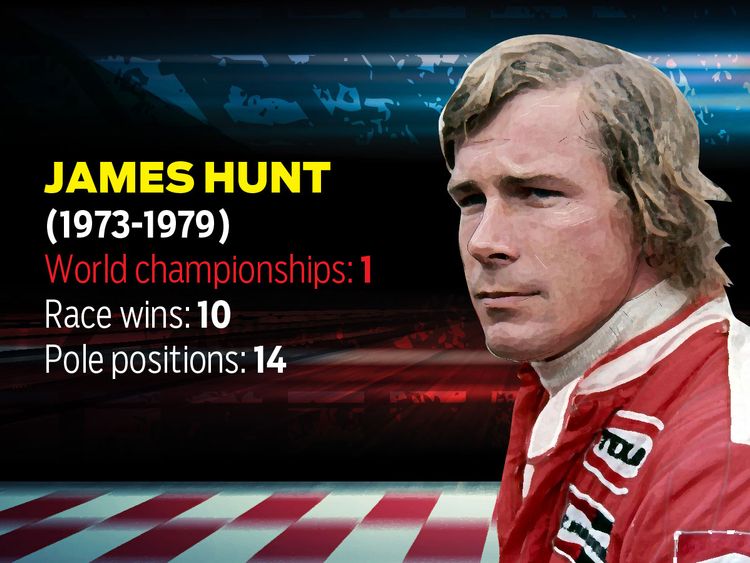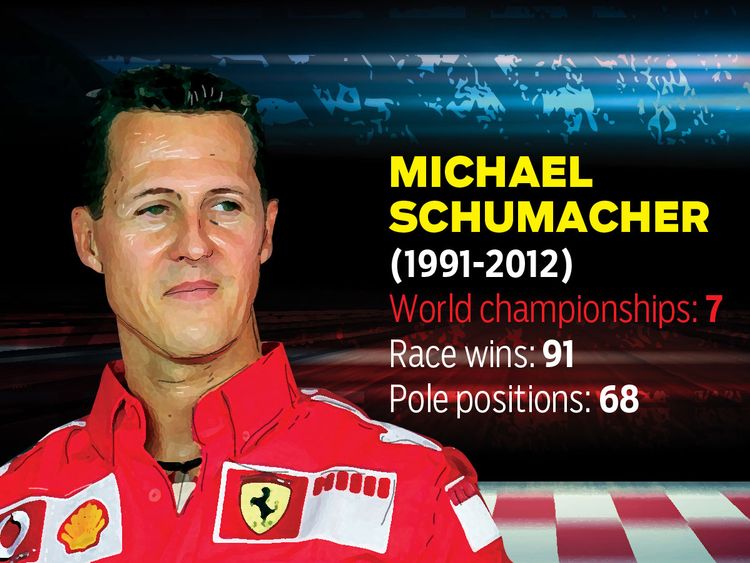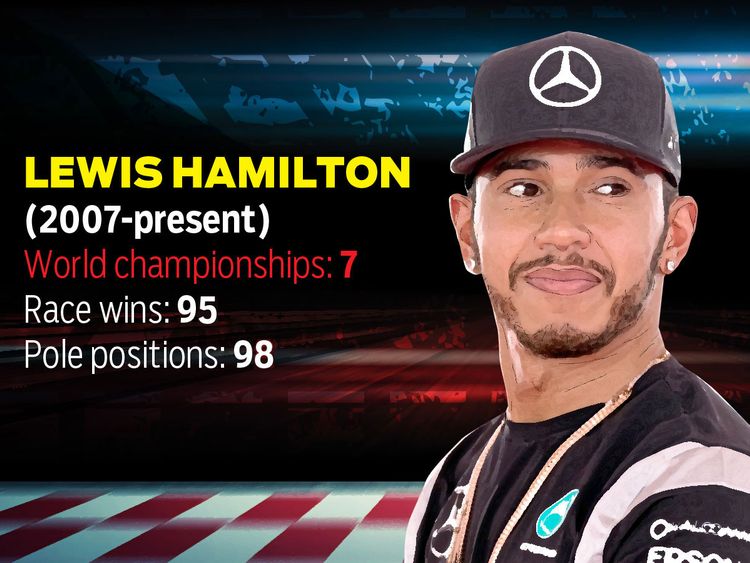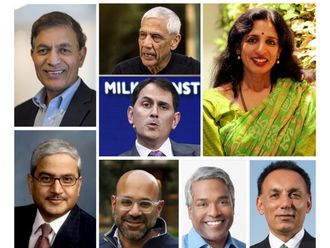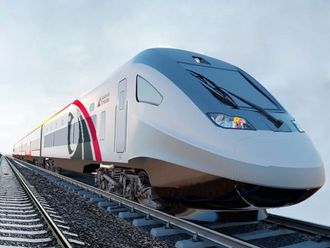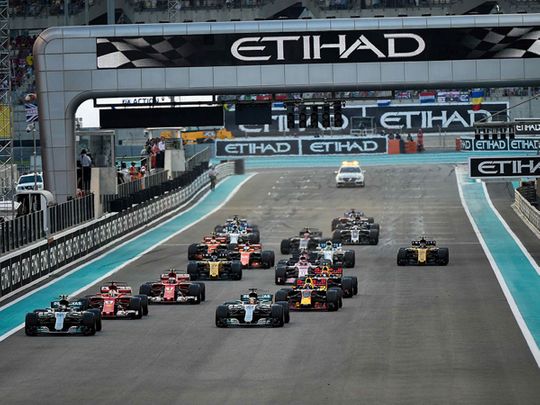
For 12 years now, Abu Dhabi has had the honour of bringing the curtain down on the Formula One season, the pinnacle of motorsport that sees the world’s best 20 drivers travel around the globe to the most challenging tracks on Earth before landing in the UAE to crown the championship driver and team.
Lewis Hamilton has already tied up the Drivers’ Championship with a thrilling drive in Turkey last month, where he came from the back to win a race to underline his dominance this season. His Mercedes team have also sown up their seventh Constructors’ Championship.
Hamilton followed that tear-filled victory up with another solid drive and win in Bahrain to increase his lead at the top of the standings.
What’s at stake in Abu Dhabi
So with the titles decided, what is at stake in Abu Dhabi?
Plenty, to put it simply.
Let’s start with the man of the moment, and the man of the decade. Abu Dhabi has been a playground for Hamilton, as he has won here five times and will be desperate to round off an almost perfect season with yet another win.

The Briton was missed at the Sakhir Grand Prix in Bahrain last weekend as he has returned a COVID-19 positive test after reporting mild symptoms following his victory on Sunday. However, all the signs point to him making a timely return to the grid for Abu Dhabi — one of his favourite tracks on the tour.
While fans will be at a minimum at the track due to coronavirus protective measures, supporters around the globe will be tuning in to witness, hopefully, the best driver of a generation, if not of all time, do what he does best.
You see, Hamilton’s crowning glory in Istanbul was not just any old win, it was a moment of historic sporting significance as he landed his record seventh world title, equalling the landmark of the great Michael Schumacher — a landmark many thought would never be matched. Now Hamilton — who already has the outright records for the most wins (95), pole positions (98), podium finishes (164), points finishes (228), career points (3,763) and points in a season (413) — can go on to even greater heights in Abu Dhabi. And that would be the perfect end to a season that almost didn’t happen, due to the COVID-19 chaos, that severely impacted a sport dependent on free and safe movement around the world.
COVID-19 chaos
That brings us to our second point as to the significance of the showdown at Yas Marina Circuit — coronavirus.
Three days before the season-opening Australian Grand Prix on March 15, the race in Melbourne was cancelled as COVID-cases spiked across the world and in the paddock, forcing the McLaren team to withdraw and set in motion a domino effect that saw most drivers and teams unwilling to participate. That set the tone for a chaotic five months as more and more races were called off or postponed, throwing the whole season into doubt.
Thankfully, the new bosses at F1, led by Chase Carey, and the more-than-accommodating flexibility of track owners in England, Austria, Italy and Bahrain meant a season would go ahead. Back-to-back races at the Red Bull Ring in Austria, Silverstone in England, the Sakhir Circuit in Bahrain and at three separate tracks in Italy allowed logistics to be simplified and a set number of races could still go ahead. It allowed Hamilton to put in one of the sport’s most dominant performances over the course of the season and see him crowned the most successful driver of all time.
To witness him bring the curtain down on a spectacular season in Abu Dhabi will be a moment for all to treasure.
Schumacher on the grid
With Hamilton’s positive COVID test and Romain Grosjean’s horrific opening-lap crash in Bahrain at the end of November, two men in particular have been handed a splendid opportunity to capitalise on a series of unfortunate incidents.
First of all, George Russell has been promoted from the struggling Williams team to deputise for Hamilton in Sakhir, and keep his seat warm for a return in Abu Dhabi.
Secondly, and more intriguingly, a certain young man called Mick Schumacher has been given the green light to step up into the Haas team, as Grosjean recovers. Given the legendary status of his father — Michael Sr — Mick gracing the field for free practice on Friday at Yas will be another landmark moment for the sport, and a moment not to be missed in the UAE.
Bahrain sets up a classic
Last week, George Russell stepped in for Hamilton at the Sakhir Grand Prix in an absolutely bonkers race in Bahrain. With multiple leaders, brilliant overtakes and first-lap mayhem, the race had it all, including a tactical howler from Mercedes in a bungled pit-stop late in the race, robbing both Russell — who was having the drive of his life — and teammate Valtteri Bottas of victory.
The tumult has only added to whetting the appetite for an Abu Dhabi classic as drivers show they will all be fighting tooth and nail in the UAE capital.
F1 Abu Dhabi 2020: 12 years of high-octane action
Your guide to Formula 1
Compiled by Shyam A. Krishna, Senior Associate Editor, and Alaric Gomes, Chief Reporter

New to Formula One racing? This guide will help make sense of it. (Information courtesy: tutorialspoint.com)
Formula One
Formula One Grand Prix is a series of races held at venues around the world. ‘Formula’ refers to a standardised set of rules that carmakers and drivers have to follow.
Formula One car
A Formula One car is an open-wheel, open-cockpit, single-seat racing car used for racing in competitions. Its engine is located behind the driver, and the car is equipped with two wings: one in the front and another at the rear.
Car design
Formula One cars now are made from carbon fibre and ultra-lightweight components. They are required to weigh a minimum of 746kgs without the driver and fuel in them.
The overall width of the car, excluding tyres, must not exceed 200cm with the wheels in the straight-ahead position. Bodywork width between the front and the rear wheel centre lines must not exceed 160cm. There is no specified maximum length, but all cars tend to be almost the same length.
Car engine
The specifications are four-stroke, turbocharged 1.6-litre, 90 degrees V6 turbo engines. The maximum engine power rotational speed is 15,000 revolutions per minute (rpm).
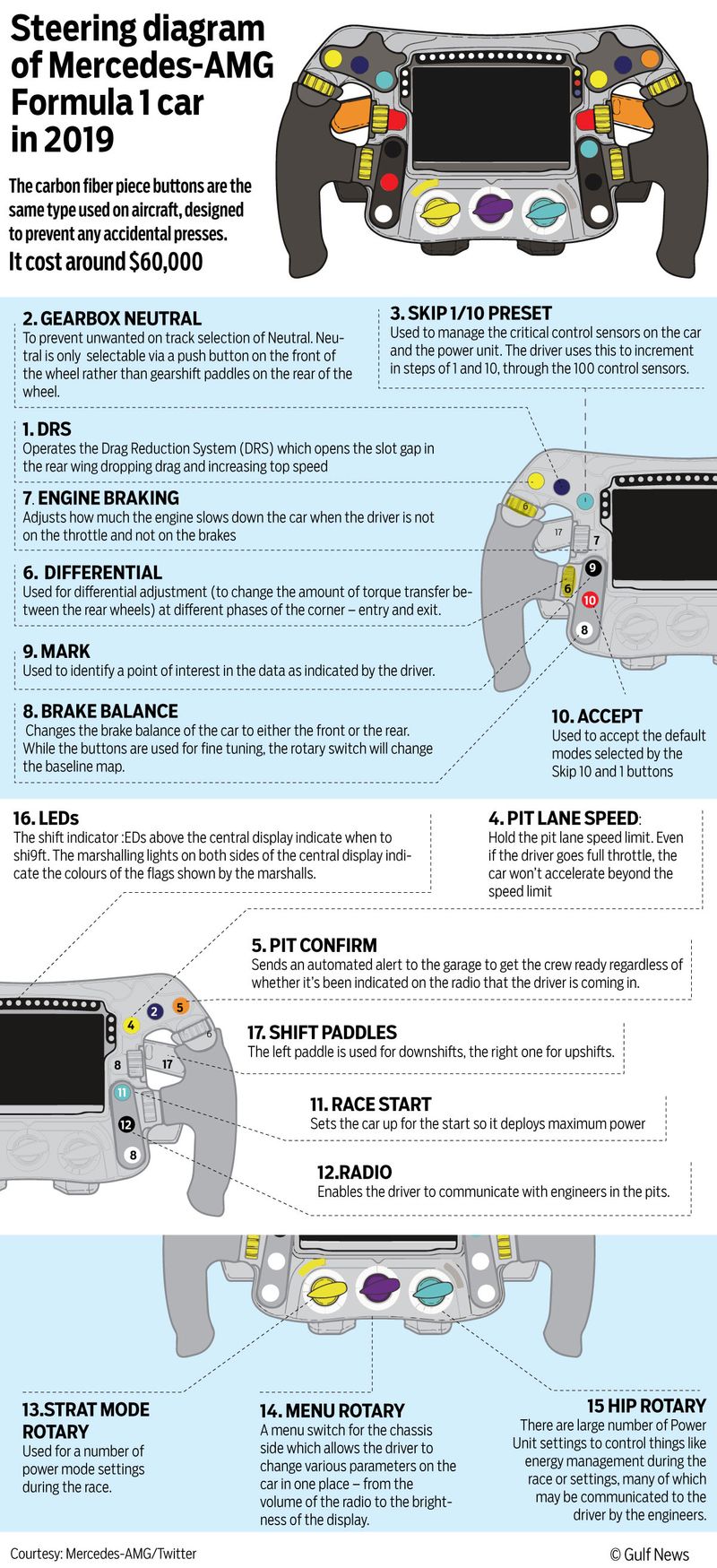
Steering wheel
The steering wheel of a modern FI car bears little resemblance to the ones used in a regular car. It’s more rectangular than round. An array of colour-coded buttons makes it look more like a PlayStation interface.
Some of the controls on the steering wheel are engine mapping, brake bias, differential settings, radio, traction control, pit lane speed limiter, rain light, hand clutch, and gearbox neutral button, the gear upshift and downshift levers are located at the back of the steering wheel.
Teams can design their steering wheel to suit their drivers, so each team’s steering wheel looks different. But they all feature the same components.
Car fuel
The fuel used by Formula One cars is a tightly controlled mixture of ordinary petrol, and can only contain commercial gasoline compounds rather than alcohol compounds.
Car tyres
Formula One cars have been using smooth thread, slick tyres since 2009. The dimensions are:
Front tyres − 245mm (width); Rear tyres − 355mm and 380mm (width)
Speed and performance
All F1 cars can accelerate from 0 to 100 mph (160 kmph) and decelerate back to 0 in under 5 seconds. F1 cars have reached top speeds of about 300 kmph or 185 mph on an average.
Safety gear
- Helmets: Helmets are compulsory. Strong and light, these are also fire resistant. The average weight of a helmet is around 1.2 kg. Interestingly, the helmets are all painted by hand
- HANS: Head and Neck Support is to protect the driver’s vertebrae and collision of head to the steering wheel in the event of an accident. Built using carbon fibre material, it is attached to the seat belt.
- Clothing: The multilayered suit is designed to protect drivers from fire during a crash. Nomex is the latest fibre material brand used to build suits for F1 drivers. The suit undergoes thermal testing; it is fire resistant and lightweight. The suit is worn by the pit crew also.
Pits and pit stops
Pit stops are essential for cars to change tyres and for making repairs, mechanical adjustments, or as a penalty. Drivers have to make at least one pit stop to change tyres because F1 tyres do not last the distance of one race.
Pits are located at the side of racing lanes, and they are assigned in the order of qualifying rankings of the team. A pit may have even up to 20 mechanics who prepare for all eventualities one lap before the car makes a pit stop.
Know the F1 terminology
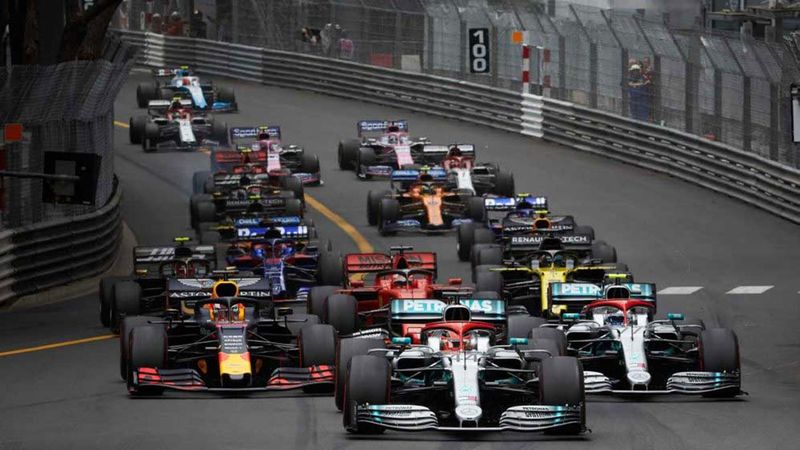
Most of these jargons are used commonly by teams and commentators. So, it really wouldn’t hurt to stay abreast of a few new things so that one doesn’t feel left out and wondering.
Backmarker: Trailing drivers are often lapped by the leading drivers. The trailing drivers are referred to as backmarkers just as we refer to backbenchers in schools and colleges.
Blistering/Graining: Blistering is when the cold surface of the track causes pieces to blow out of the tyre surface because the inside of the tyre is warmer. Graining is just the opposite. It is a situation when the tyres are cold, and the hotter surface outside causes the rubber chunks to come off and stick to the tyre.
Box: Box is a reminder to the drivers coming from a controller in the pits that they have a pit stop coming during the lap or in the next lap. The word is derived from the German word ‘Boxenstopp’ which means a pit stop.
Dirty Air/Clean Air: Dirty air is the turbulent air left in the wake of the preceding car. The car coming in the wake of the leading car will experience a drag because of the dirty air. Clean air is the undisturbed air encountered by a car speeding all on its own. The air flows smoothly around the car’s streamlined surface but leaves dirty air in its wake.
DRS: Drag Reduction System (DRS) is allowed to be used in only marked zones on the track. Turbulent air behind the leading car can lead to a drag on the car following it closely, reducing the downforce. A flap on the car is then used to reduce the drag and increase the downforce, which can help the car in overtaking on a straight.
Flatspot: When a car driver locks his front brakes, the front tyres skid along the surface of the track rather than roll across it. This wears the tyres giving it a prominent flat spot. A flatspot on the wheels results in unscheduled pit stops spoiling the chances of the driver in the race.
Marbles: Tiny pieces of rubber that are shredded off the tyres while cornering are called marbles. They accumulate off the racing line, and driving on them can be dangerous as the car loses traction.
Oversteer/Understeer: When a car is cornering, and the rear wheels of the car lose grip and step out of line, the driver is said to have oversteered. On the other hand, if the front wheels lose grip and the car takes a shallower turn than the driver intended, the car has been understeered.
Pole-sitter: A pole-sitter is a driver who wins the pole position in the qualifying races. Pole sitters have an advantage if they get away from the pack and hold the lead into the first corner.
Power Unit: The engine of a modern-day F1 car has ‘power units’ rather than just engines as in the olden days. This unit consists of six components. The Internal Combustion Engine (ICE), the Turbo Charger (TC), the Motor Generator Unit — H (MGU-H), Motor Generator Unit — Kinetic (MGU-K), the Energy Store (ES) and the Control Electronics (CE) taken together is called the Power Unit. These components combine to give an F1 car just below 1,000bhp of power.
A brief history of Formula One racing
Shyam A. Krishna, Senior Associate Editor
Formula One racing is not for the faint-hearted. The roar and scream of engines and the sound of screeching, squealing brakes fill the circuit as cars zip around the track at mindboggling speeds. It’s high octane action. That’s the world of motor sport, whose lineage can be traced to the races on public roads in Europe at the end of the 19th century.
The appellation “Grand Prix” was first used for 1901’s French Grand Prix at Le Mans. The European Grand Prix racing of the 1920s and 30s were the precursor to Formula One races.
Formula One racing, when did it start? Which was the first race? That isn’t clear since there are several claimants. The 1947 Pau Grand Prix, won by Nello Pagani on Maserati 4CL, could arguably be considered the first Formula One race. It conformed to the standardised set of rules, referred to as Formula One, drawn up in 1946 by the Commission Sportive Internationale (CSI), the predecessor of Fédération Internationale de l'Automobile's (FIA). It defines Formula One as a premier single-seater racing category in motorsport.
The formula based on engine capacity to level the playing field became effective in 1947, and was initially known variously as Formula A, Formula I, or Formula 1. But the races from 1946-1950 the races were not part of an organised calendar. The first race labelled “International Formula One” took place at the same venue, three years later. Argentine Juan Manuel Fangio, who went on to become an F1 legend, won the race in a Maserati.
Check out these beauties
The F1 World Championship was born in May 1950 when Silverstone hosted the British Grand Prix – the first sanctioned championship race for F1 cars. There were around 20 races, but only seven were considered for the drivers’ title. Italian teams of Alfa Romeo, Ferrari, and Maserati dominated the early years. Fangio racked up five World Championship titles (with five different manufacturers), a record which stood for 45 years until German Michael Schumacher won his sixth in 2003.
An era of British F1 engineering excellence started from 1958 through the 1960s as Teams Cooper, BRM, Brabham and Lotus won 11 world titles. Between Jim Clark, Jackie Stewart, John Surtees and Graham Hill, British drivers won nine Drivers' Championships. During that Lotus became the first team to carry advertising on their cars, and in 1958 a car with an engine mounted behind the driver won for the first time when Stirling Moss drove Cooper to victory in the Argentine Grand Prix.
Formula One technology developed at a rapid pace in the 1970s and early 1980s, and raw horsepower was unleashed on the track with the advent of turbo-powered cars (Turbo engines were banned in 1989). The adrenaline-fuelled races gave rise to intense sporting rivalries and edge-of-the-seat action. McLaren’s technical superiority remained dominant, but its stars, Ayrton Senna of Brazil and Alain Prost of France, became fierce rivals often complaining bitterly of each other.
In the 1990s, innovation and competition to build fast cars drove technology to complex levels, but F1’s governing bodies moved to make racing safer, especially after the deaths of Senna and Austrian Roland Ratzenberger at the San Marino Grand Prix in Imola, Italy, in 1994. It helped, as no driver died on the track in the next 20 years.
Drivers from McLaren, Williams, Renault (formerly Benetton), and Ferrari won all the championships from 1984 to 2008. But Michael Schumacher and Ferrari took a stranglehold on the podium, winning five Driver’s title in a row from 2000, and six Constructor’s title from 1994. Schumacher retired in 2006 after 16 years of F1 races, setting many records: 91 Grand Prix wins (beaten by Lewis Hamilton this year), most wins in a season (13 out of 18), and most Drivers' Championships (seven, tied with Hamilton).
After Schumacher’s exit, F1 changed, rules changed, there were new technical regulations, but racing remained fierce. That set the stage for the swift rise of Red Bull Racing, spearheaded by Sebastian Vettel, who in 2010 became the youngest champion in F1 history. The German went on to win four titles.
F1 rules and engines changed once again in 2014 with the introduction of 1.6-litre turbocharged hybrid power units. That ushered in a sustained period of dominance by Mercedes AMG and Hamilton. With six world titles, the Briton has staked claimed to be considered the greatest driver of all time.
After a brief pause brought about by the global pandemic of COVID-19, F1 is back on track. The bandwagon has rolled into Abu Dhabi for the final race of 2020. Seven decades on, the Formula One saga continues, bringing together the best drivers and engineers of the world.
Most wins, most poles, and seven titles, where does Lewis Hamilton fit among Formula One's greatest drivers?
How technology made F1 faster and safer
Shyam A. Krishna, Senior Associate Editor
Formula One racing is about fast cars. Machines that hurtle around a racetrack at incredible speeds, steered by highly skilled drivers. Technology is at the core of what makes these cars zip at amazing speeds.
When F1 became an international sport in the 1950s, there’s been a scramble to develop the fastest car. That brought together the best carmakers with the best engineering minds to put together high-performance cars in the hands of the best drivers in the world.
After seven decades, F1 is one of the fastest and safest sports in the world. And for that, they have the technology. The journey hasn’t been comfortable. Innovation and competition brought about changes. Some were banned since they were dangerous, and others simply because it robbed the spectators the skill of the drivers.
Back in the 1950s, the cars driven by Juan Manuel Fangio to five titles bore little resemblance to the ones that fetched seven championships for Lewis Hamilton. The best drivers cannot win with poorly-powered cars. So engineering is as integral as driving skill in Formula One racing.
Here’s a look at some most significant game-changers, with a little help from redbull.com.
Mid-engine placement
In the early days of motorsport, the engine was always placed front and centre. At high speeds, this led to understeer (when the front tyres start slipping). Britain’s Cooper made a radical change in 1957 by placing the engine behind the driver but ahead of the rear axle. It provided for even weight distribution. In 1958, Britain’s Stirling Moss drove the Cooper to victory in the Argentine Grand Prix. Jack Brabham’s back-to-back championship wins in 1959 and 1960 convinced other carmakers to follow suit. By 1961, all manufacturers switched to the new standard layout.
Monocoque design
F1 cars used to be built employing a traditional space-frame design (a rigid structure constructed from interlocking components in a geometric pattern). All that changed in 1962, when Lotus introduced the revolutionary aluminium sheet monocoque [single shell or hull], making the car virtually one large body panel. It helped distribute tension and compression across its surface. The design drastically reduced weight, improved acceleration, helped in top speeds and fuel efficiency.
Monocoque is a French term for a single shell (like an eggshell) or single hull. Also called structural skin, it’s a system where loads are supported by the external skin rather than an internal frame.
Active suspension
Active suspension was one of F1’s first electronic driving aids. The system ensured a constant ride height and maximised grip and aerodynamic efficiency. A synthetic spring linked to electronic monitors helped active suspension to manage the downforces and make amends for conditions. Data from major circuits was used to programme active suspension to predict the road conditions and adjust the suspension. Since it impacted F1 as a spectacle, the technology was banned in 1994.
Turbochargers
Turbochargers and superchargers [forced induction engines] were banned between 1961-65 but was reintroduced in 1966 after a change in regulations. By 1986, normally aspirated engines had disappeared from the circuit as turbocharger unleashed enormous horsepower. With power, came instability and it was banned again in 1989. The shift to less powerful engines in 2014 allowed turbochargers to return to F1. Present-day cars use a hybrid version.
KERS
Kinetic Energy Recovery System (KERS), introduced in 2009, allows cars to store energy lost during braking, and reuse it to provide a short acceleration.
How does it work? Here’s what BBC Top Gear say: Kinetic energy that you would lose to heat while braking is sent to a flywheel, which can capture 150-watt hours in around eight seconds of gentle braking. That’s the same amount of energy you’d need to charge 25 new iPhones. The recovered energy can be stored for about half an hour or used immediately, either as a supplement to the engine, or in one great big lump. The former will cut consumption by up to 25 per cent, and the latter will add 80hp instantly.
Traction control
In the event of wheelspin (rotation of wheels without traction), traction control automatically reduced power to the wheels. It allows for near-perfect starts, controlled acceleration, and eliminates drift. Complaints that it reduced the driver’s skill and allegations of exploiting the loopholes led to a ban in 1994 before it was allowed again in 2001. Since 2008, traction control remained illegal.
Semi-automatic gears
Semi-automatic gears eliminate the need for a driver-controlled clutch. Introduced by Ferrari in 1989, it provides for faster gear changes, allowing the driver to keep the hands on the steering wheel. They also ushered in the era of the modern composite steering wheel with paddles, buttons, toggles, switches and screens which allow drivers to monitor and control every aspect of the car’s performance.
Halo safety device
The halo safety device has been in the news lately after it saved Romain Grosjean’s life on November 29, following a horrific crash at the Bahrain Grand Prix that saw his car split in half and engulfed in flames.
Introduced in 2018, halo protects drivers from large pieces of flying debris. It evoked a tepid response from drivers and their teams who found it ugly. Some were later convinced about the protection offered by this armour. After the Bahrain crash, there will be more backers for halo.
Since carmakers have to build halo into the chassis, it could impact aerodynamics and stress distribution. Which means more innovation and newer designs.


